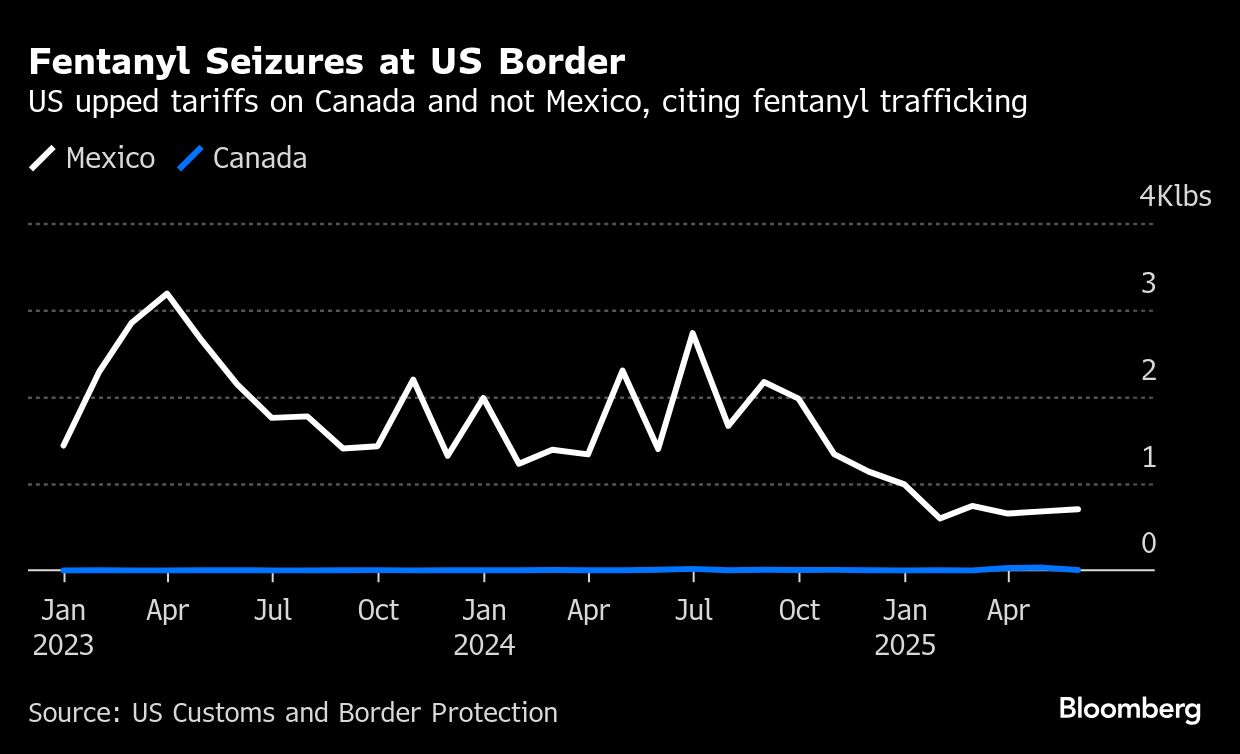Major Tariff Increase: President Donald Trump recently revealed a substantial hike in tariffs on certain products imported from Canada, now reaching 35%. This increase adds to the existing tariffs of 25% that Trump initially implemented in early March under emergency legislation.
The White House stated that Canada hasn’t cooperated in combatting the ongoing influx of fentanyl and other illegal drugs, prompting this tough stance. Additionally, they pointed out that Canada retaliated against prior US tariffs.
USMCA Exemption Stays: Despite the tariff increase, goods traded under the US-Mexico-Canada Agreement (USMCA) remain exempt. This exemption has been crucial for US automakers and businesses with North American supply chains, allowing them to continue importing a significant portion of products from Canada and Mexico without incurring duties.
As a result, the effective tariff on US imports from Canada was roughly around 5%, according to the Bank of Canada’s estimates from July 30. However, it is expected to increase slightly following the latest changes, with estimates now suggesting it could be between 6% and 7%.
“We still have some buffer against these new tariffs,” commented Fen Hampson, an international affairs professor at Carleton University in Ottawa.
Economic Impact: Following Trump’s announcement, the Canadian dollar took a hit, dropping to C$1.3871 per US dollar before rebounding.
This move amplifies a trade conflict between two countries that historically enjoyed tariff-free trade since the 1980s. In the previous year, the US imported approximately $475 billion worth of goods and services from Canada and exported over $440 billion, primarily consisting of vehicles, auto parts, and consumer goods.
Recent statements by Canadian Prime Minister Mark Carney expressed concerns about the difficulty of negotiations, stating that it’s unlikely to finalize an agreement by August 1. Carney noted that despite the tariffs, the US rates on Canadian goods remain among the lowest compared to its other trading partners, and he indicated that the government was prepared to support sectors and jobs affected by these changes.
Willingness to Negotiate?: In an NBC interview, Trump hinted at the possibility of discussing matters further with Carney, suggesting they may converse that same evening. However, he ruled out reaching any new agreements before his self-imposed deadline.
Negotiation Challenges
Since Trump’s election, the Canadian government has committed significant funds—C$1.3 billion ($938 million)—for bolstering border security, including hiring additional officers and enhancing patrol capabilities. They’ve also appointed a former police chief to address issues related to fentanyl trafficking.

After winning the election in April, Carney has made various concessions, including increasing military spending and axing a digital services tax that could have cost US technology firms billions.
On July 10, Trump warned Carney of the impending 35% tariff, referencing various issues, including fentanyl and barriers faced by US dairy exports.
Challenges of Negotiating with Trump: Lori Turnbull, a professor at Dalhousie University, remarked that Trump seems unlikely to negotiate a deal favorable to Canada.
Critics in Canada often point out that Trump’s justification regarding fentanyl trafficking doesn’t hold tightly, considering the much higher quantities seized at the US-Mexico border. Since October, US Customs and Border Protection noted only 74 pounds of fentanyl confiscated at the US-Canada border in contrast to nearly 8,800 pounds at the Mexico border.
On the same Thursday, prior to announcing the increased tariffs, Trump also opted to extend existing tariffs on Mexican goods for an additional 90 days.
Necessity of a Deal
The USMCA exemption has help mitigate the trade war’s economic impact on Canada. Fresh forecasts from Canada’s central bank suggest the economy may steer clear of recession as long as the exemption remains in place.
However, growth remains sluggish, and unemployment sits at 6.9%, a rise from earlier this year.
“Canada needs a deal this time to instill certainty in its investment climate,” noted Eric Miller, president of the Rideau Potomac Strategy Group. He ensures that many potential investors are currently hesitating on where and how to allocate resources.
Meanwhile, Carlo Dade from the University of Calgary has indicated a concern that Canada might eventually lose the USMCA exemption, leading to baseline tariffs similar to those faced by numerous other trading partners.
The 35% tariff stands apart from Trump’s sector-specific tariffs that have already been burdening Canadian industries, particularly steel with its 50% imports tax, and the auto industry, which struggles with varying tariff rates and narrow profit margins.
The US also imposes a 50% tariff on aluminum and additional tariffs on softwood lumber stemming from a longstanding trade dispute predating Trump’s presidency.





















